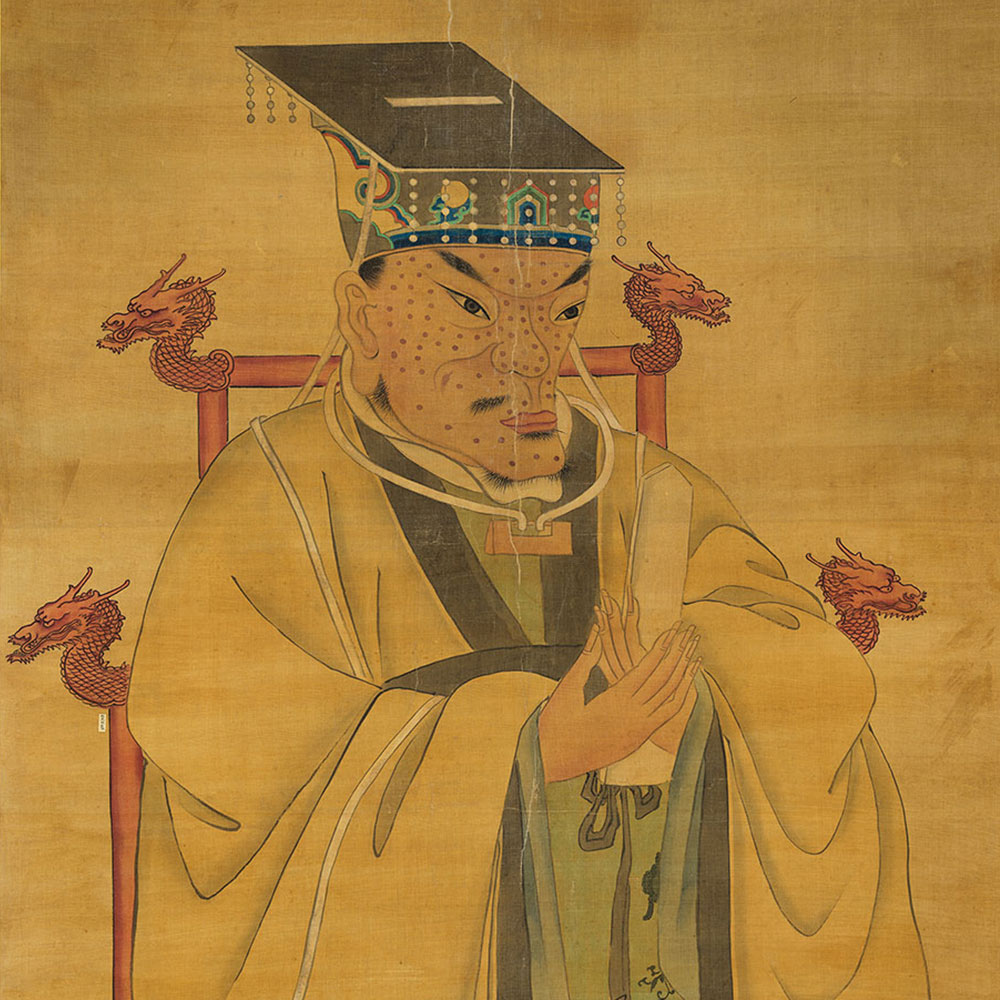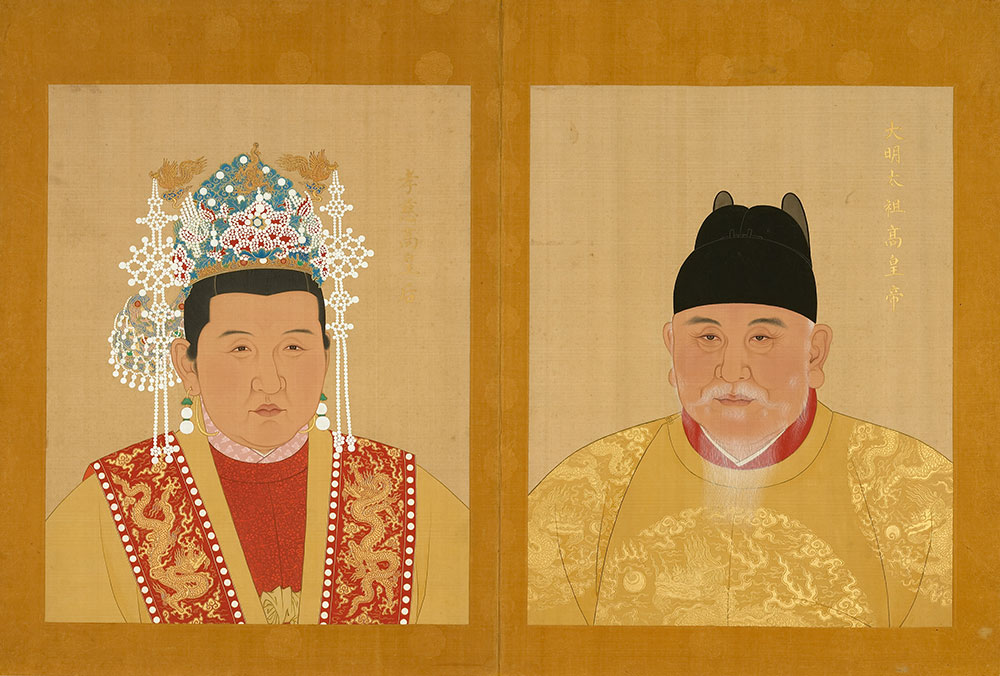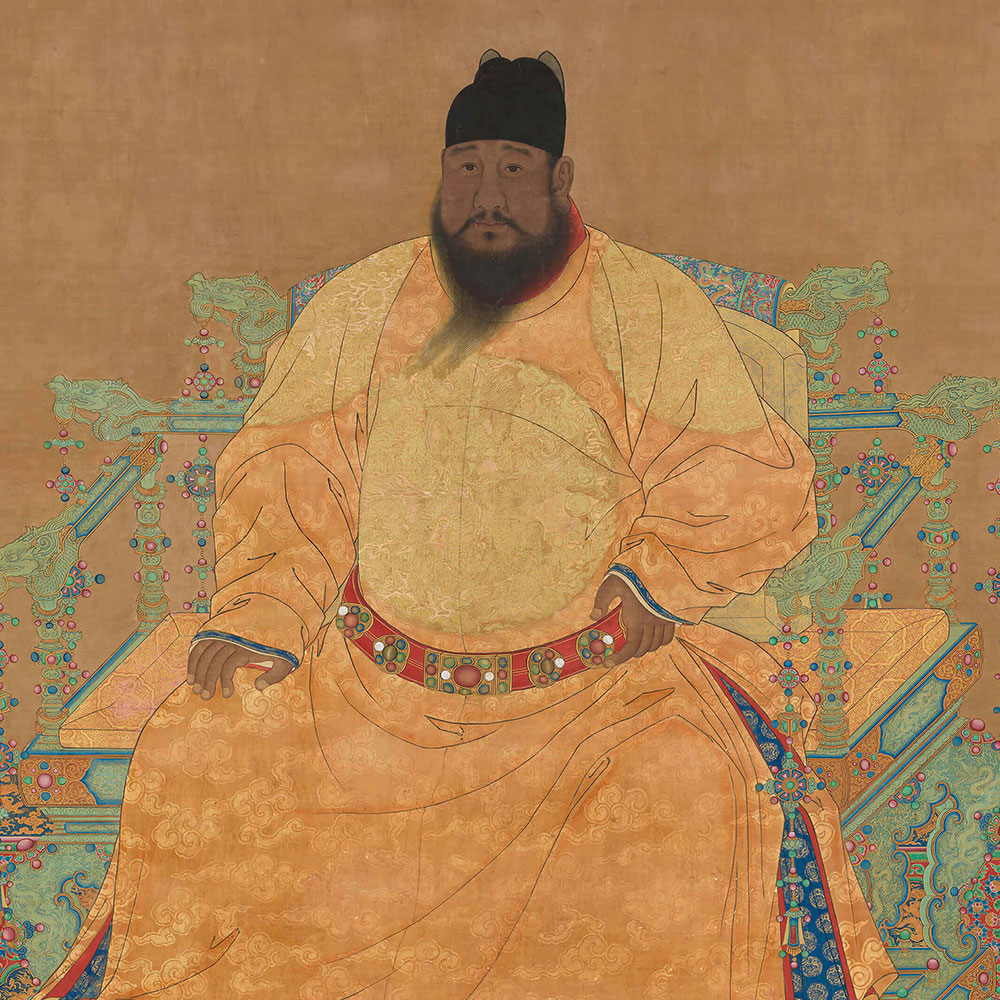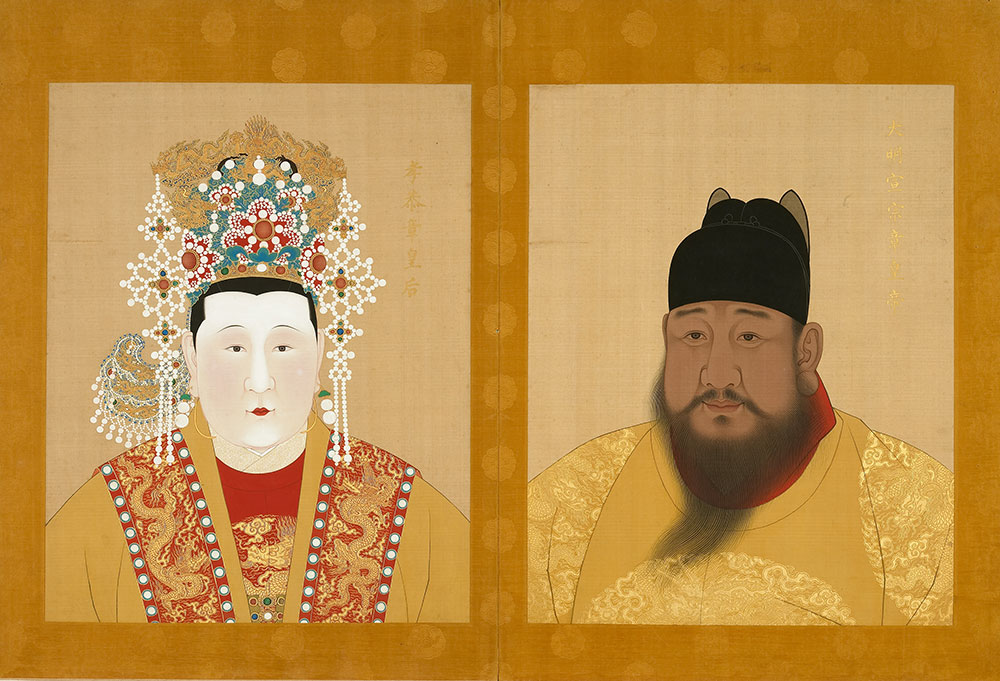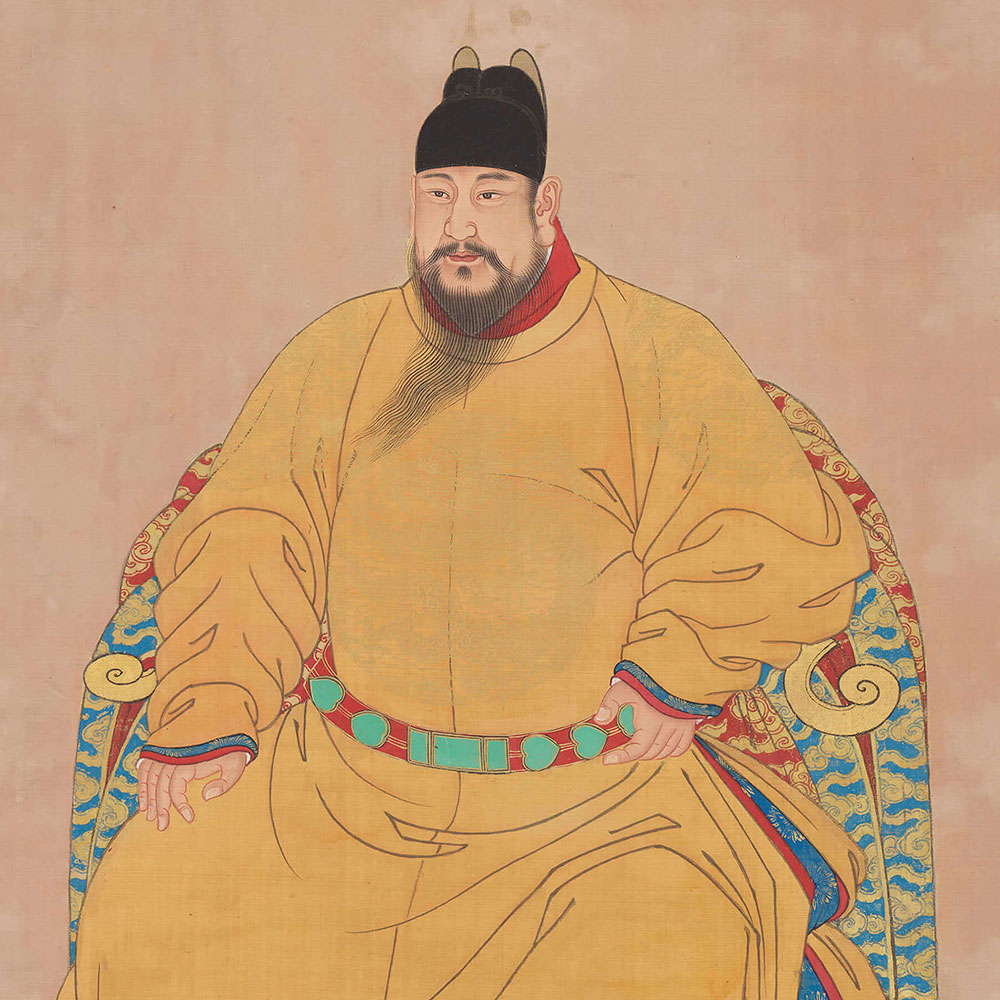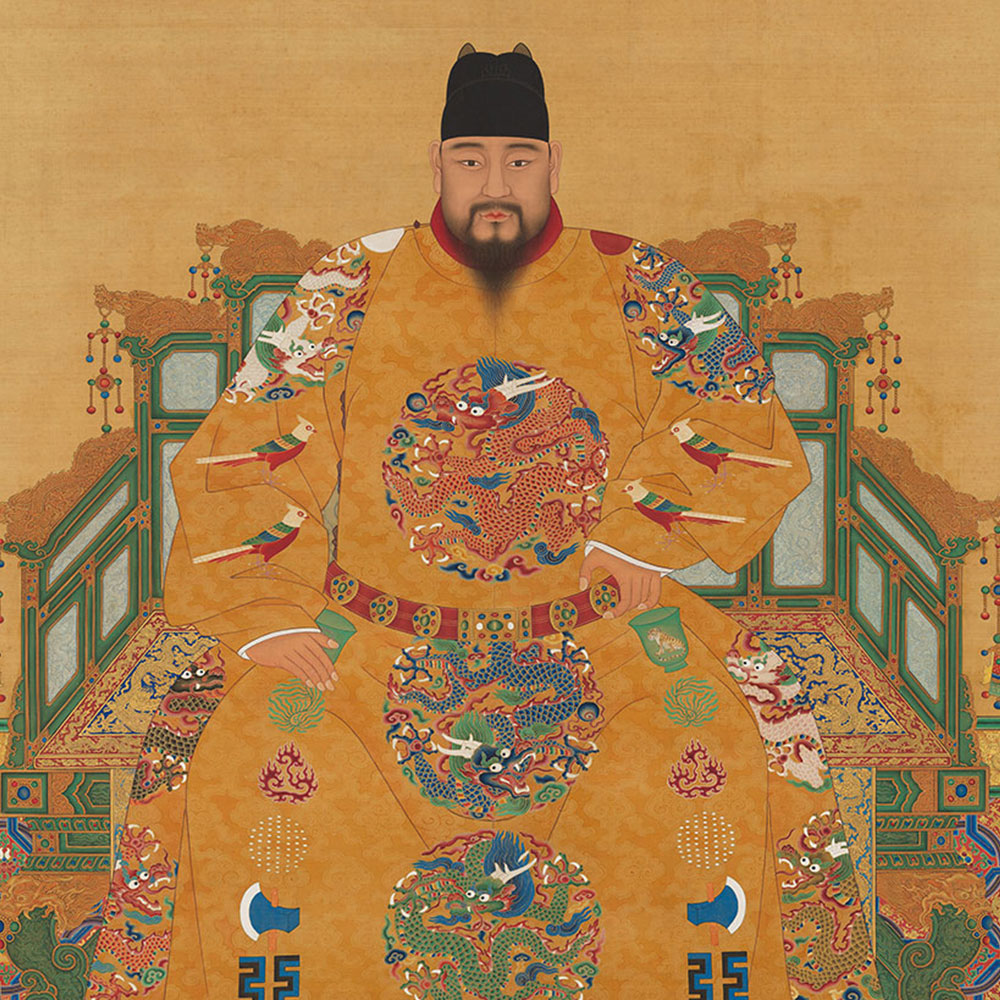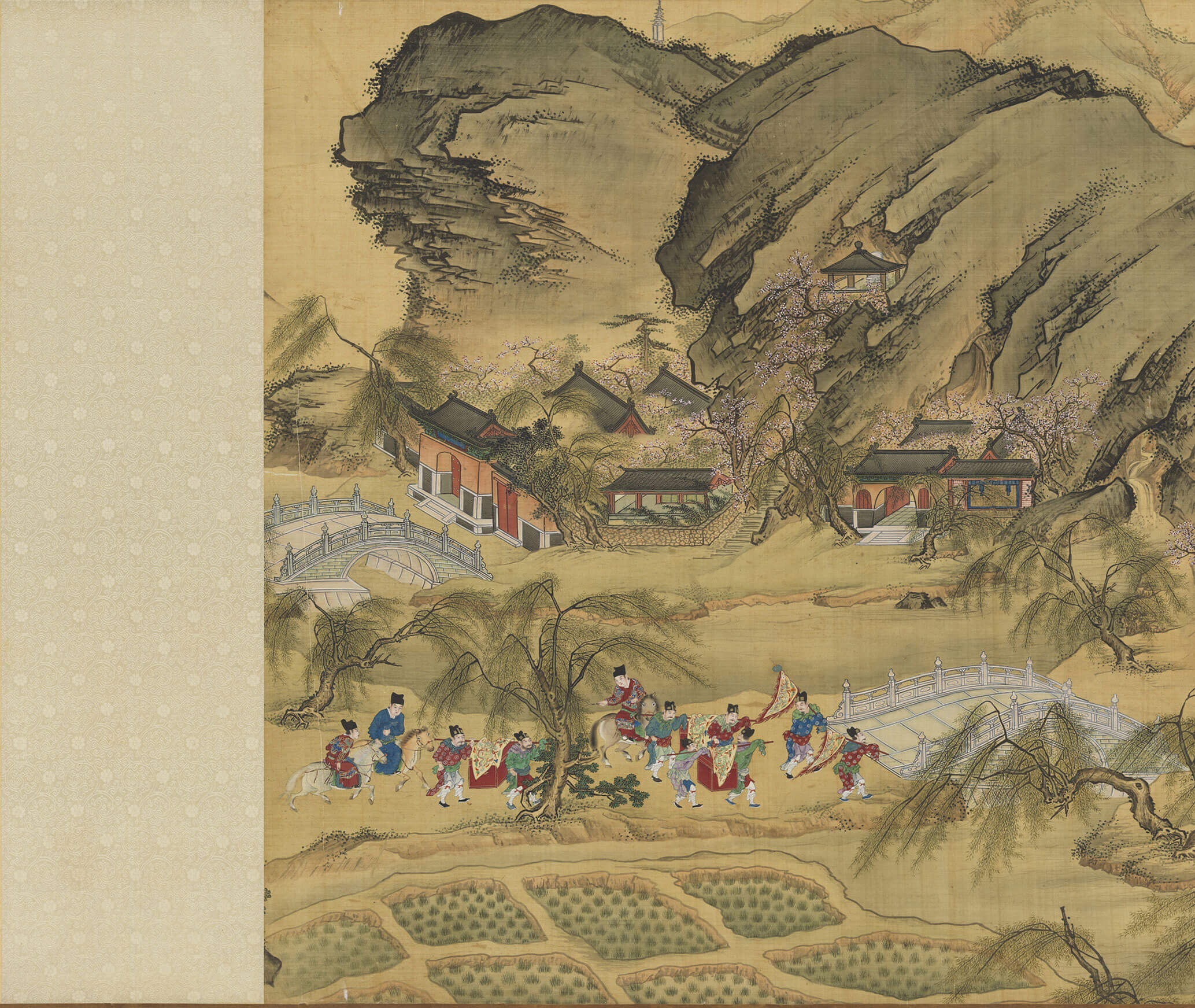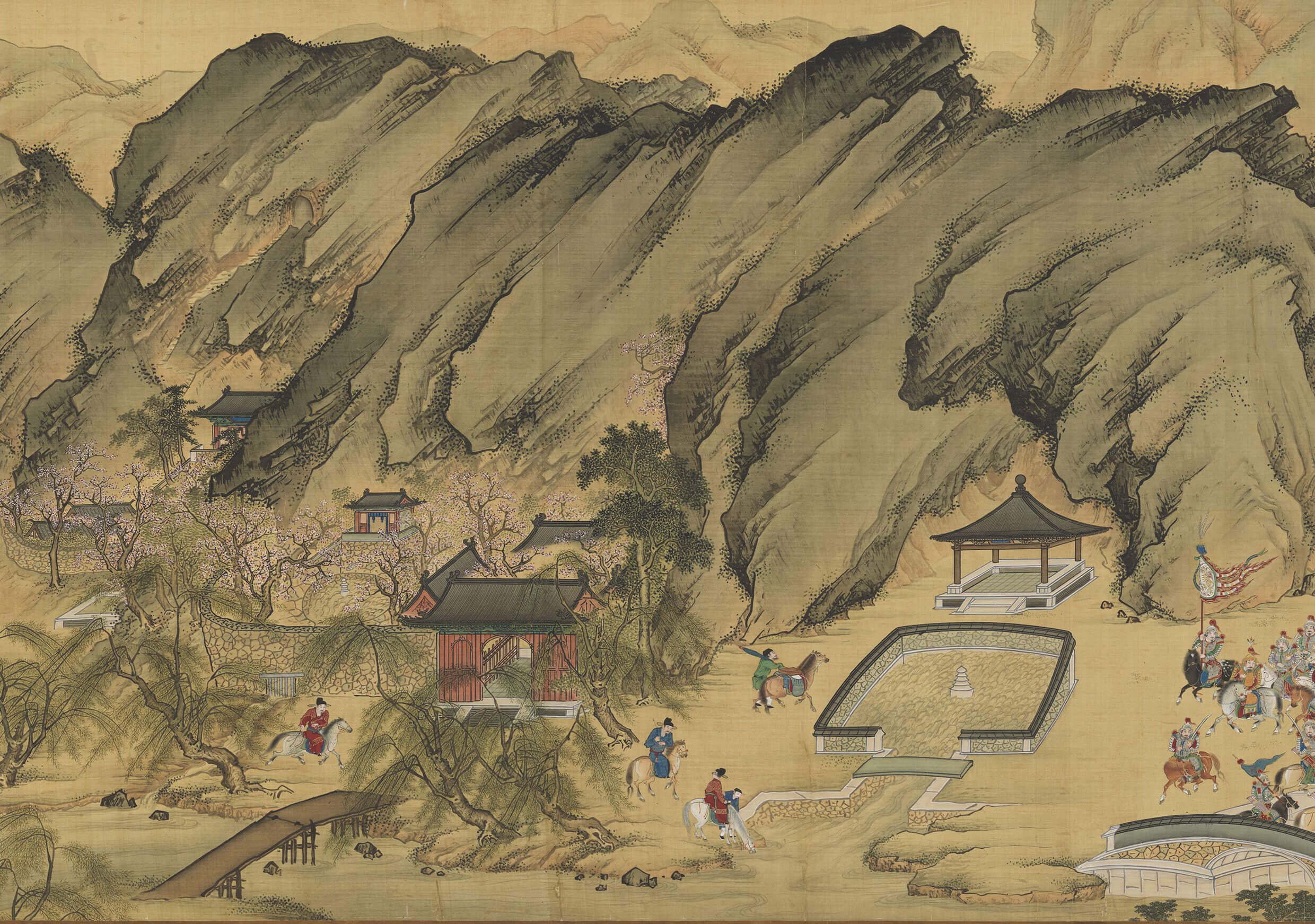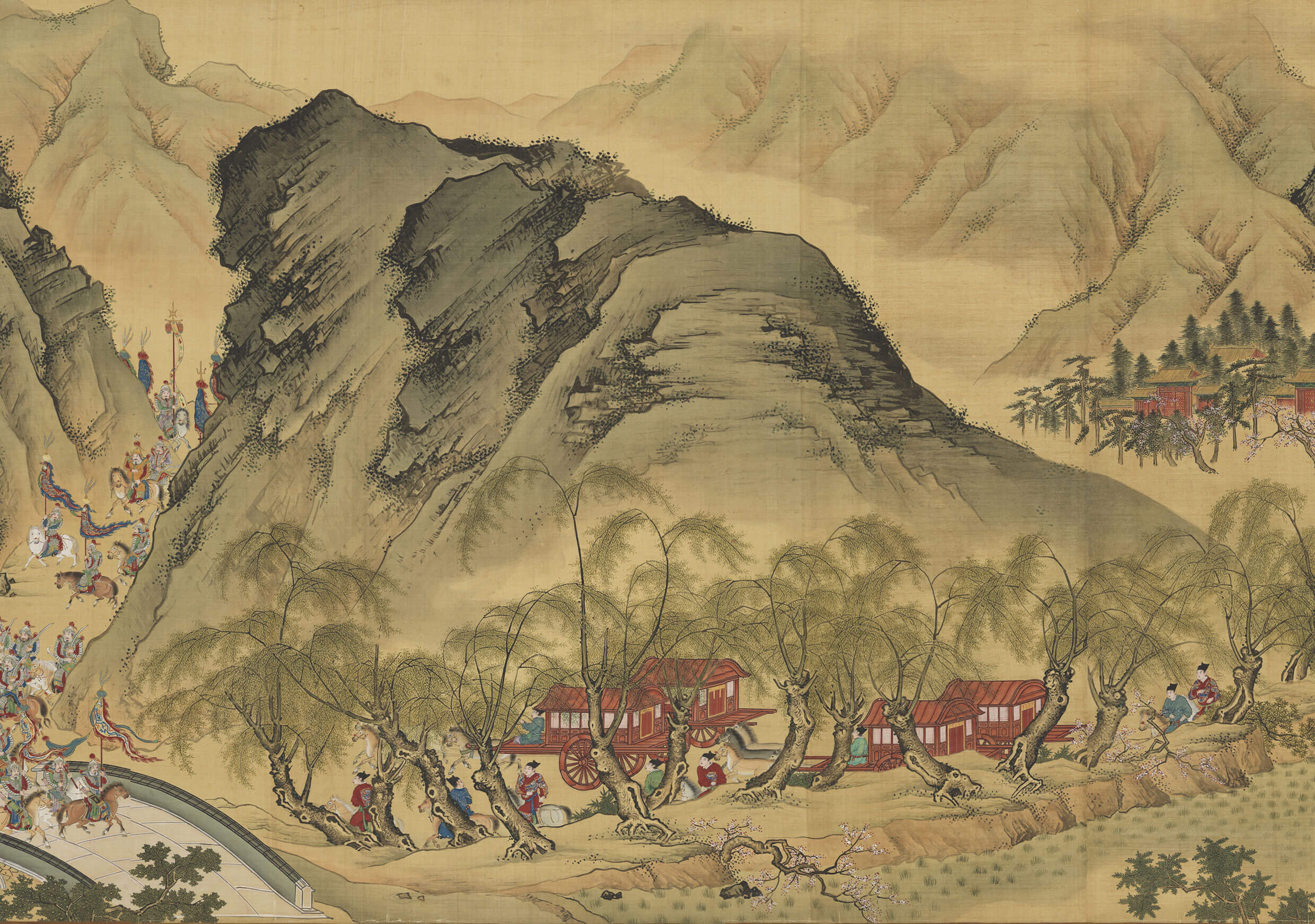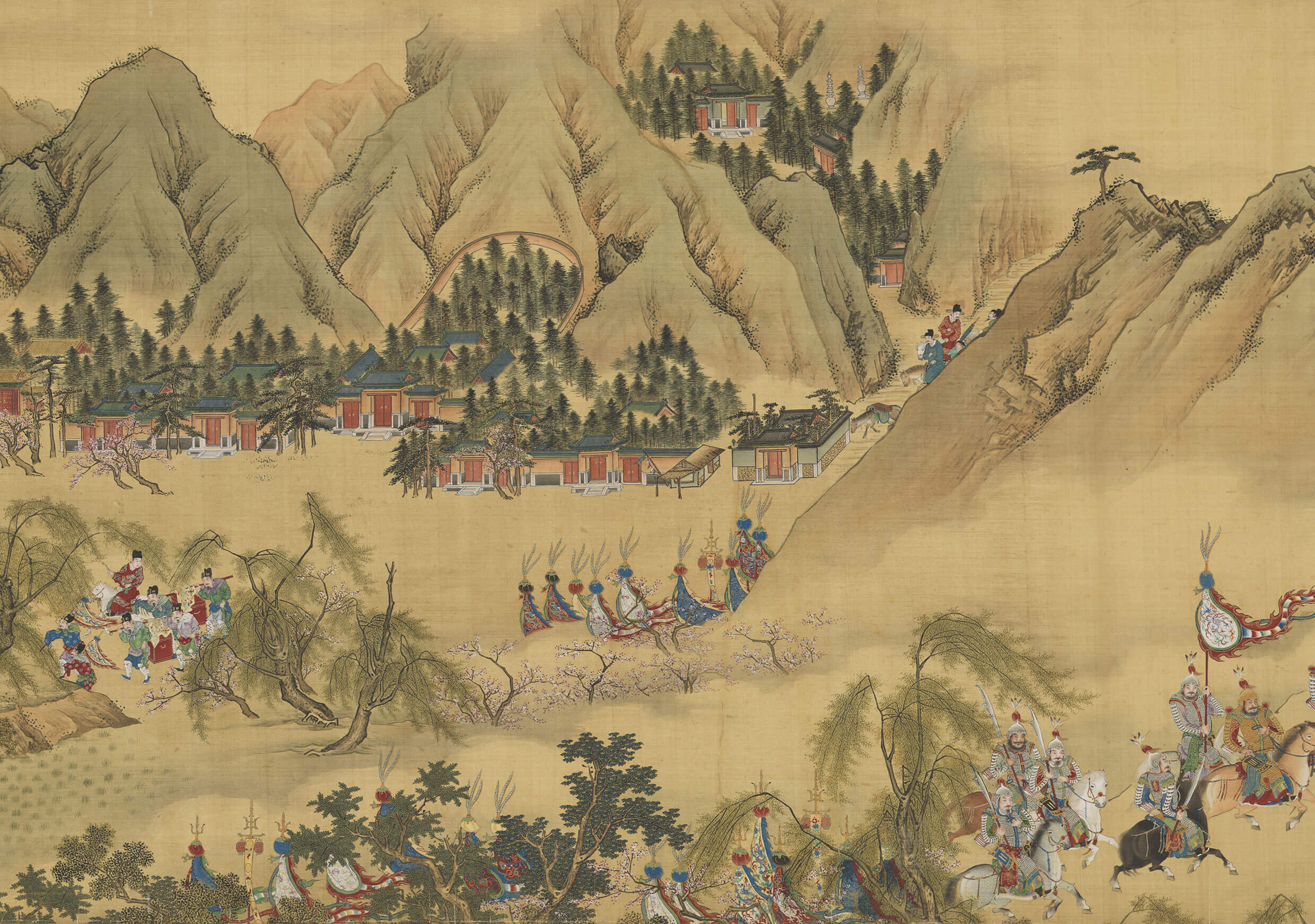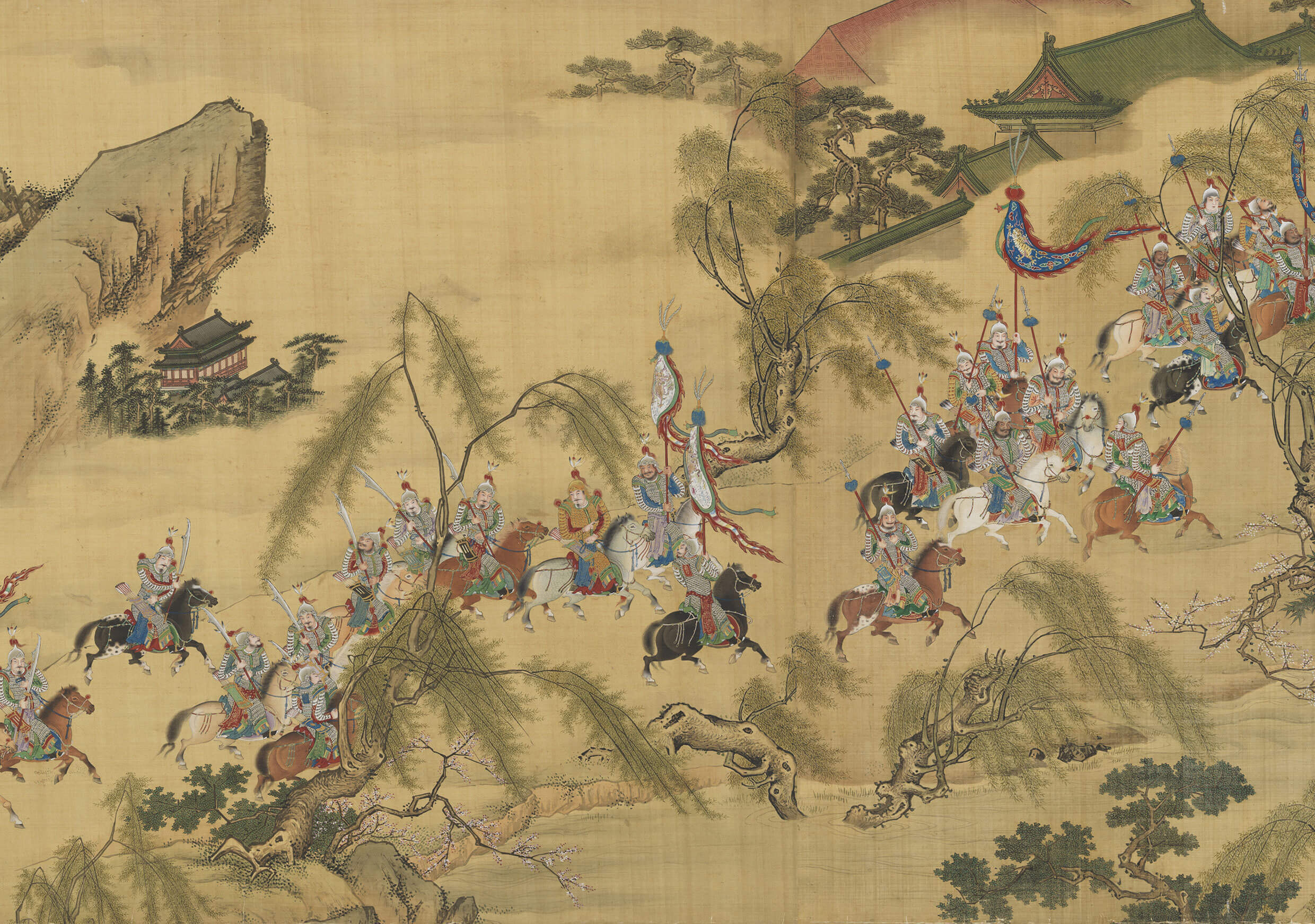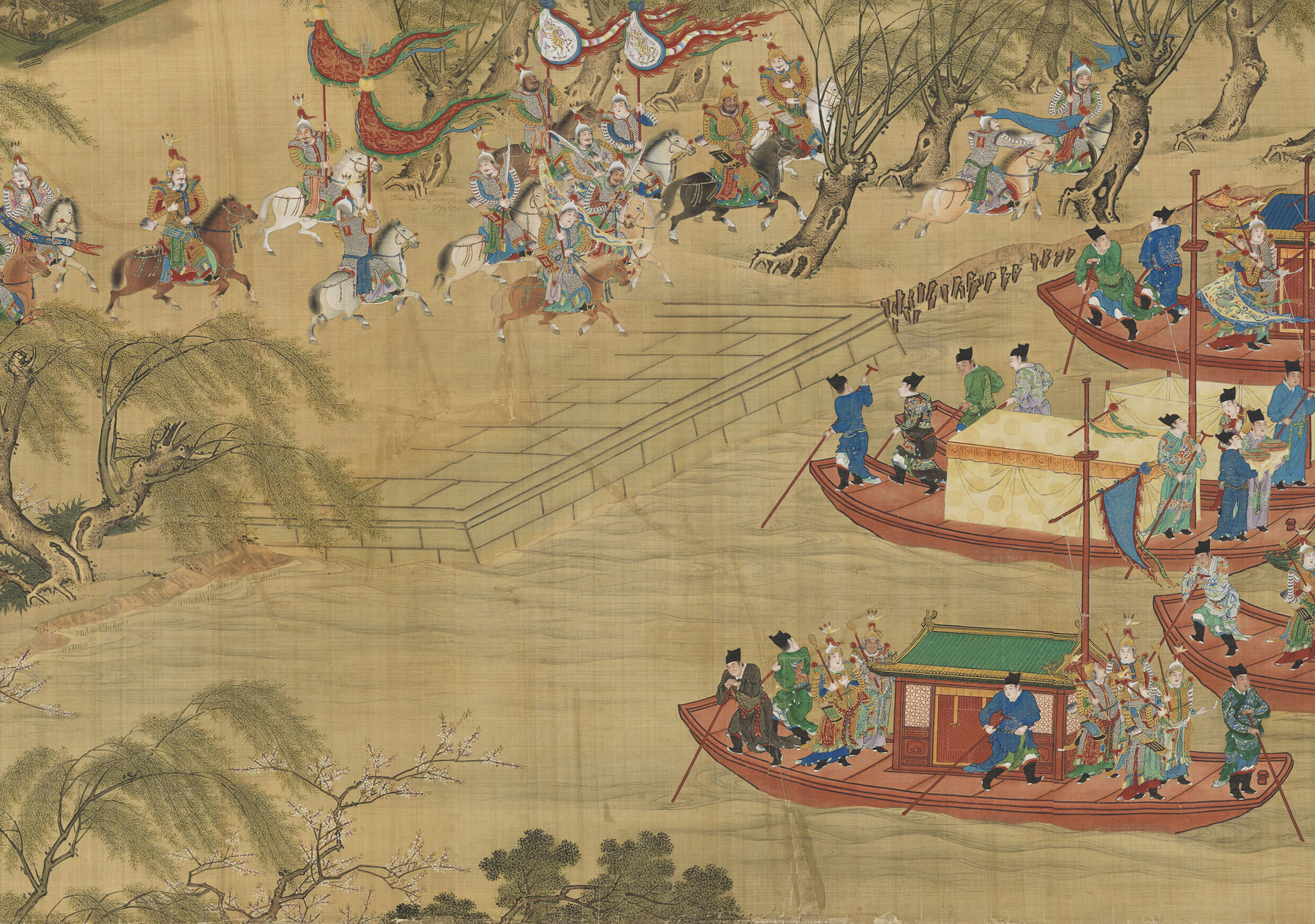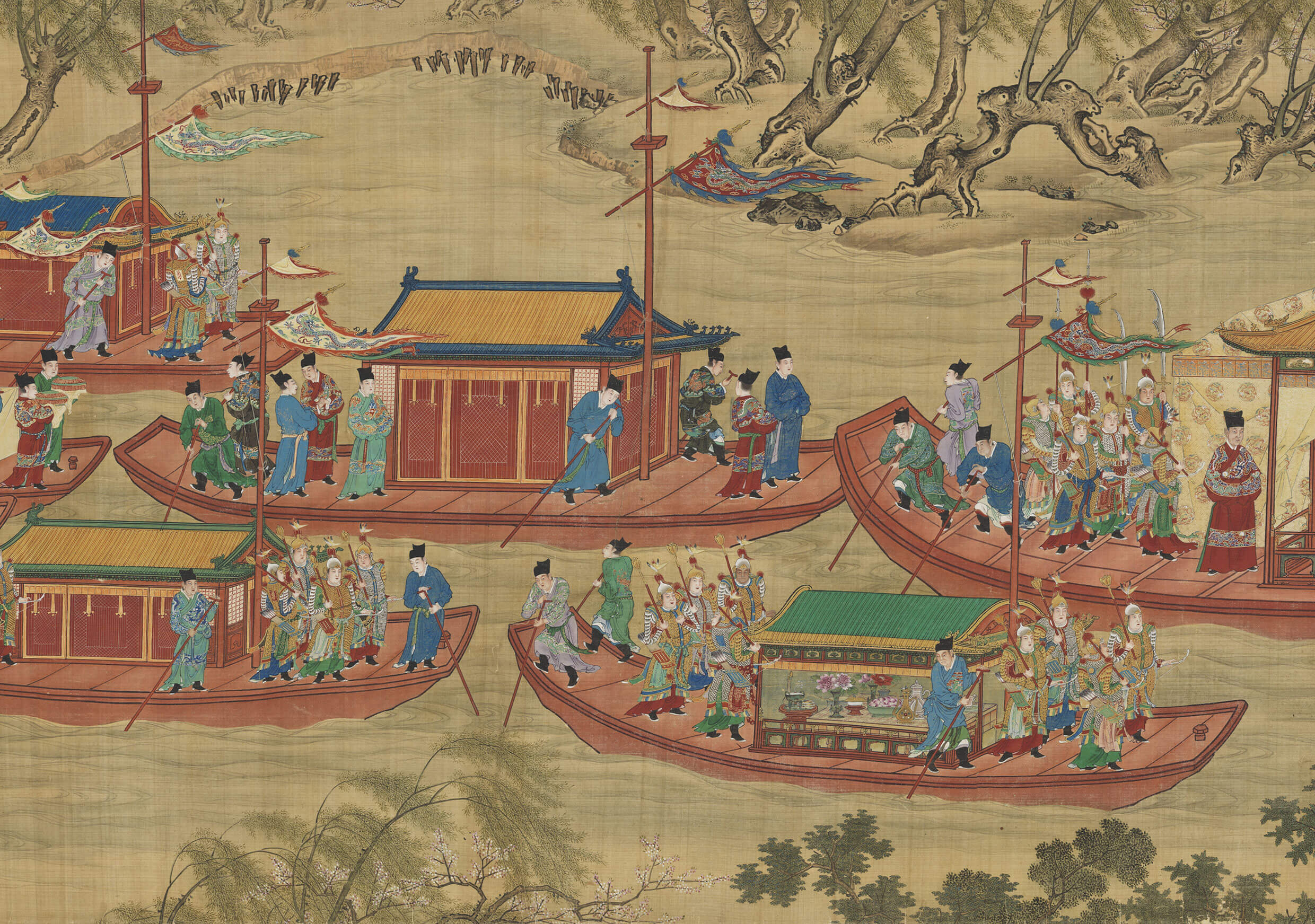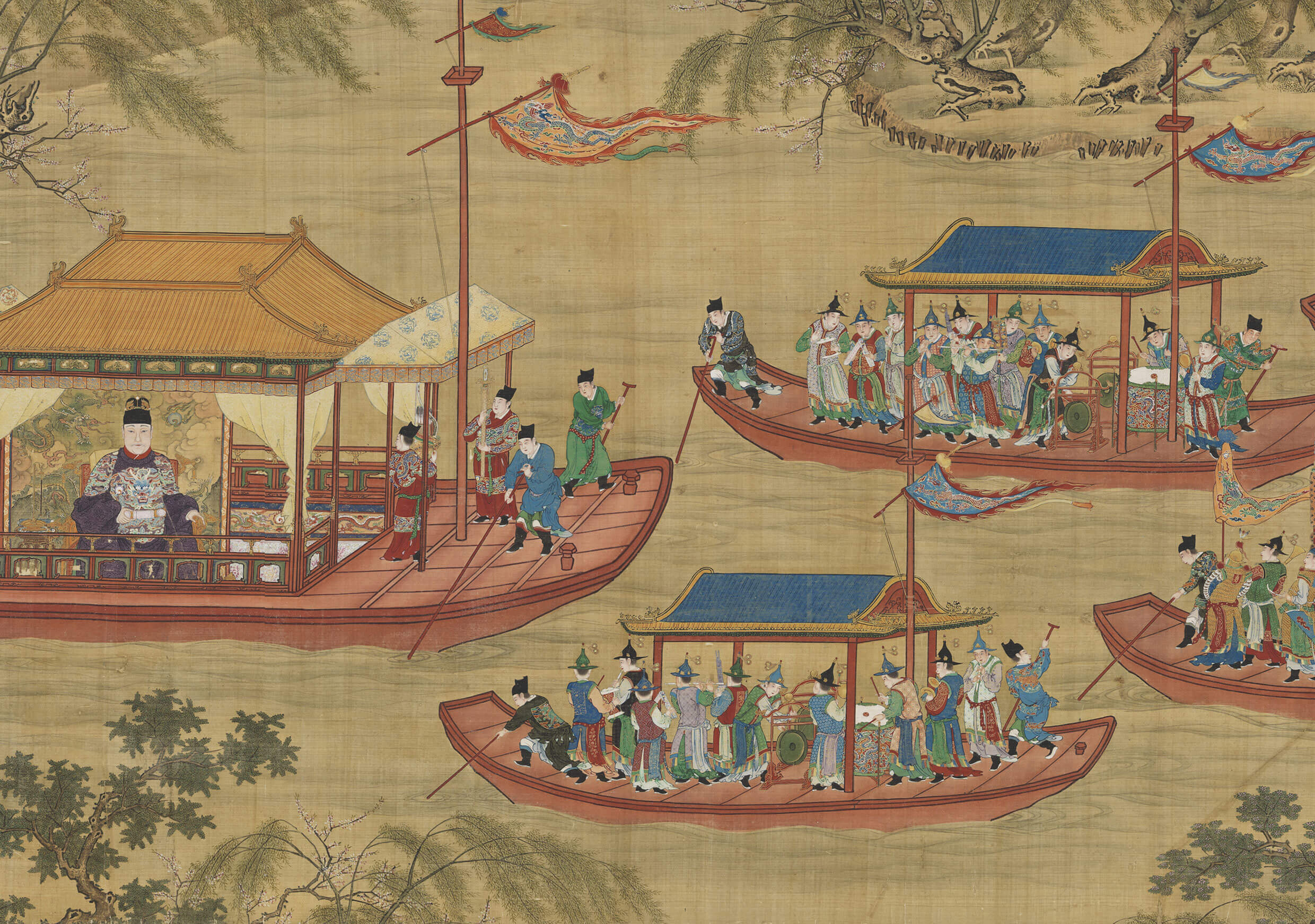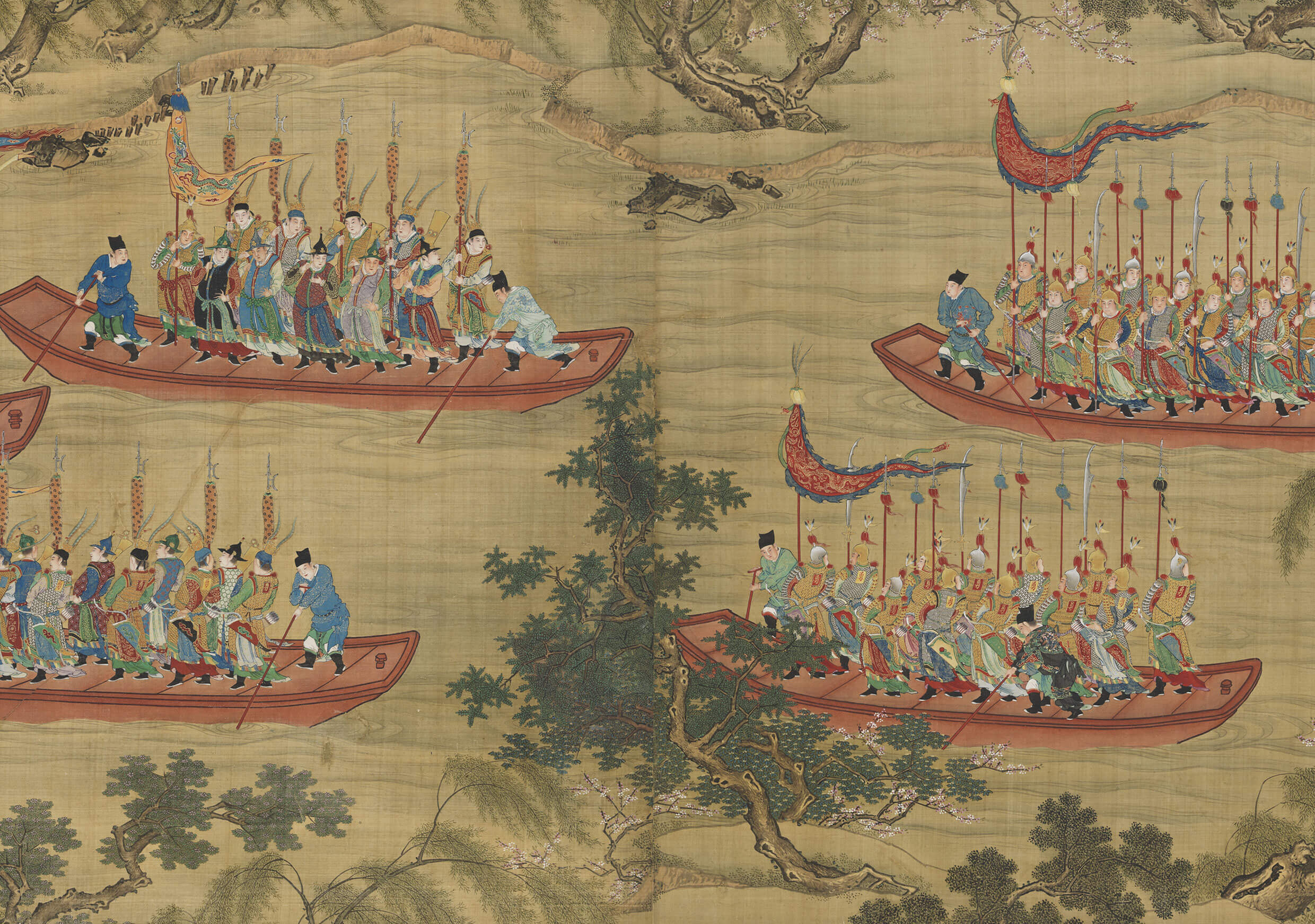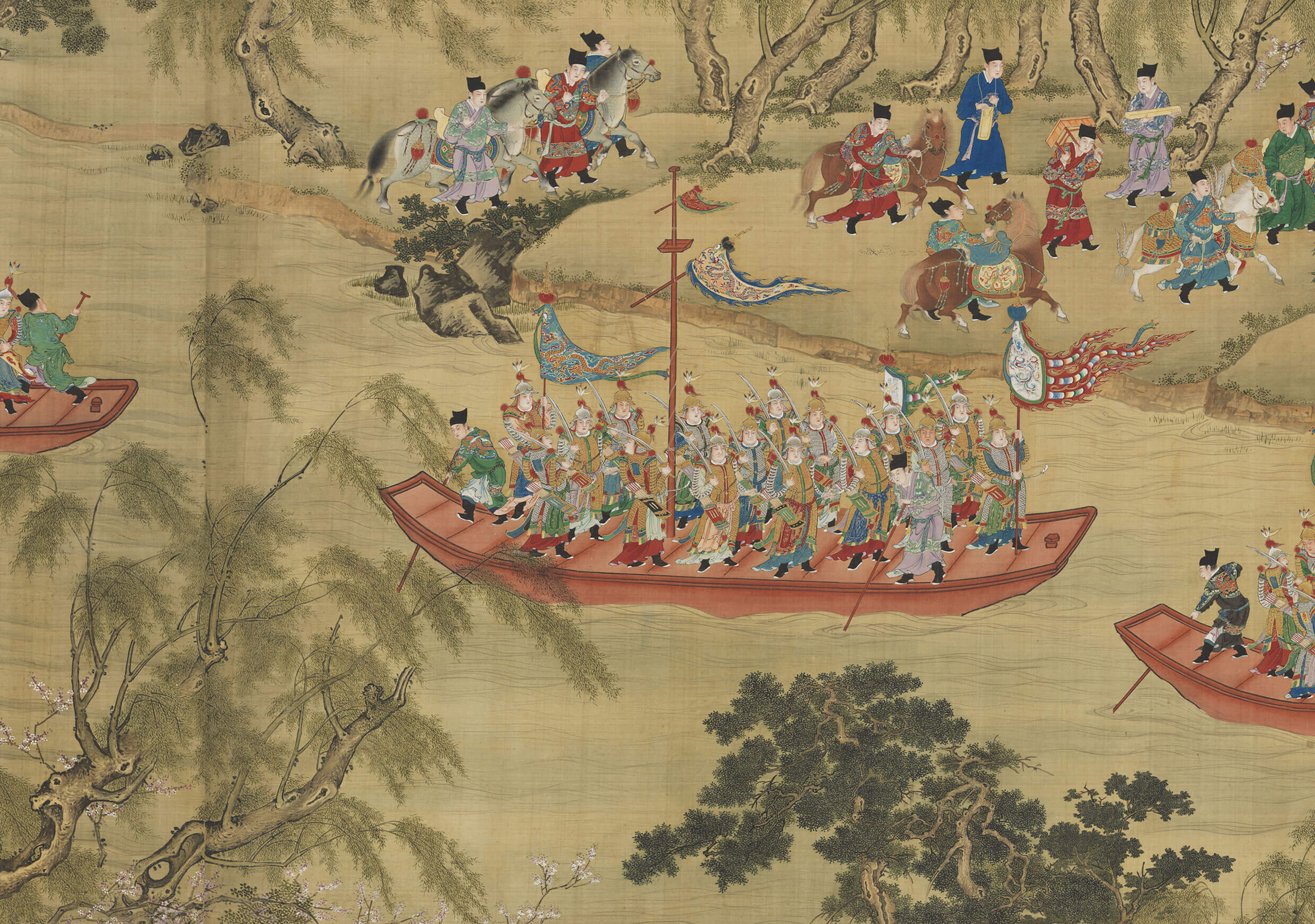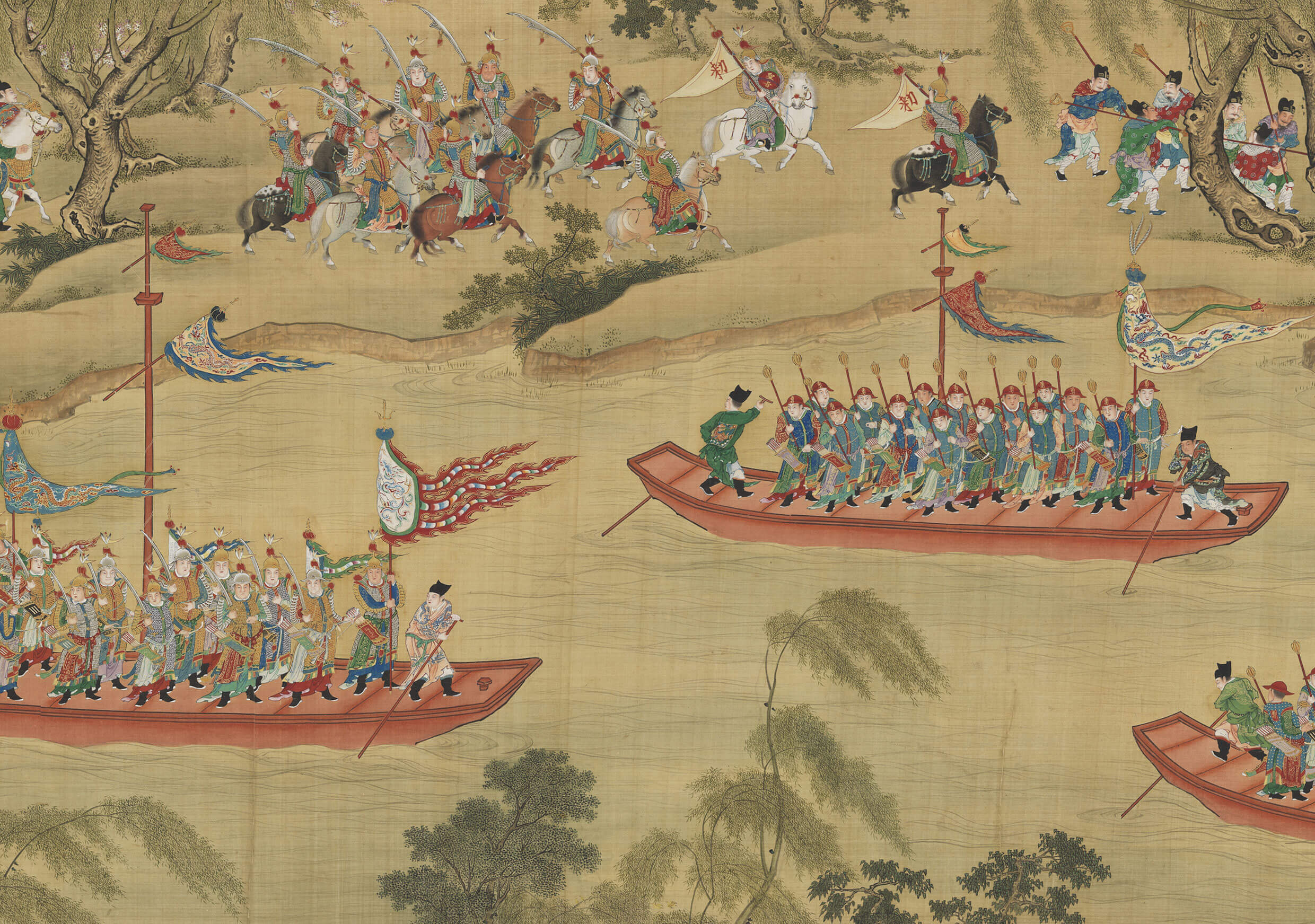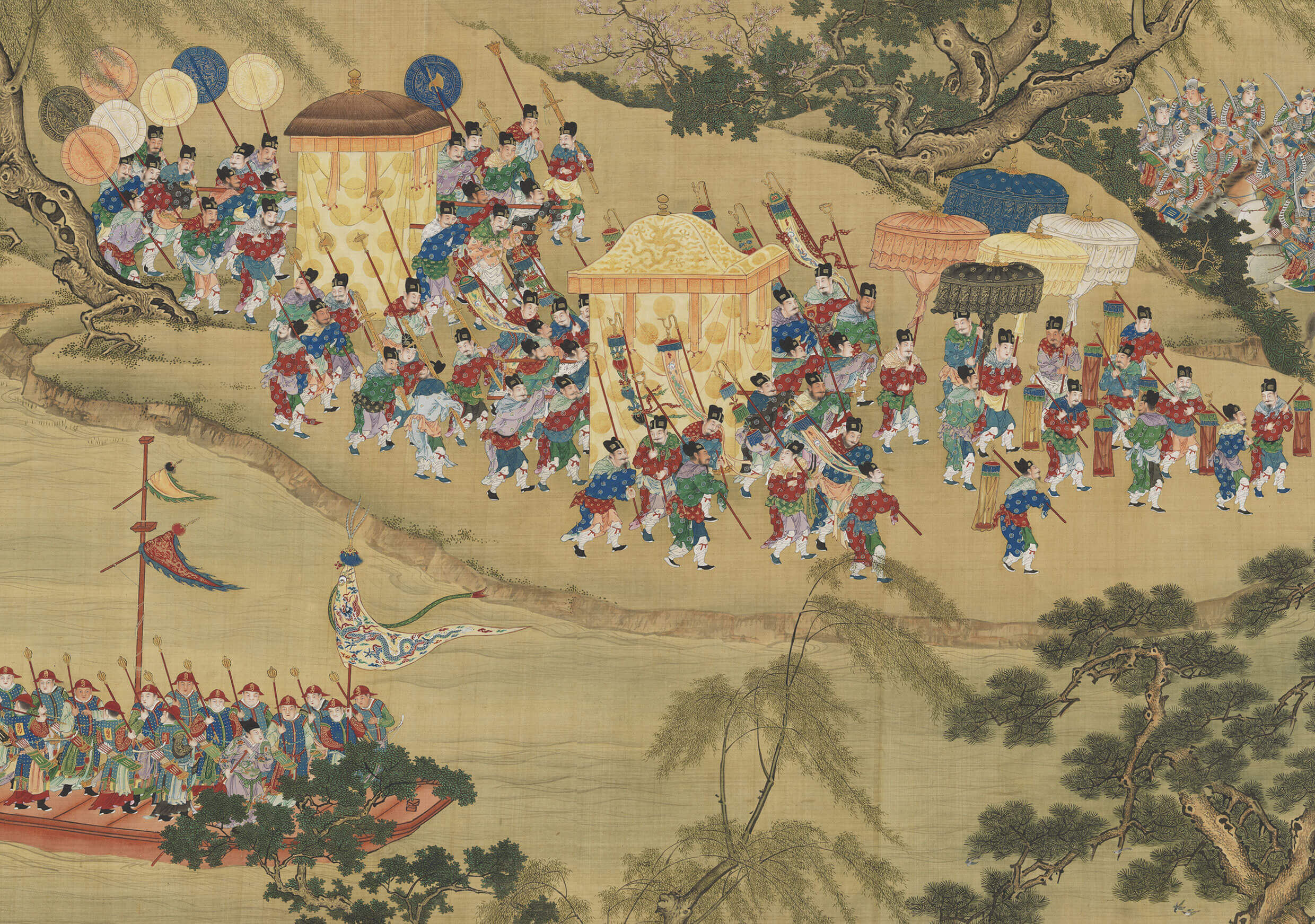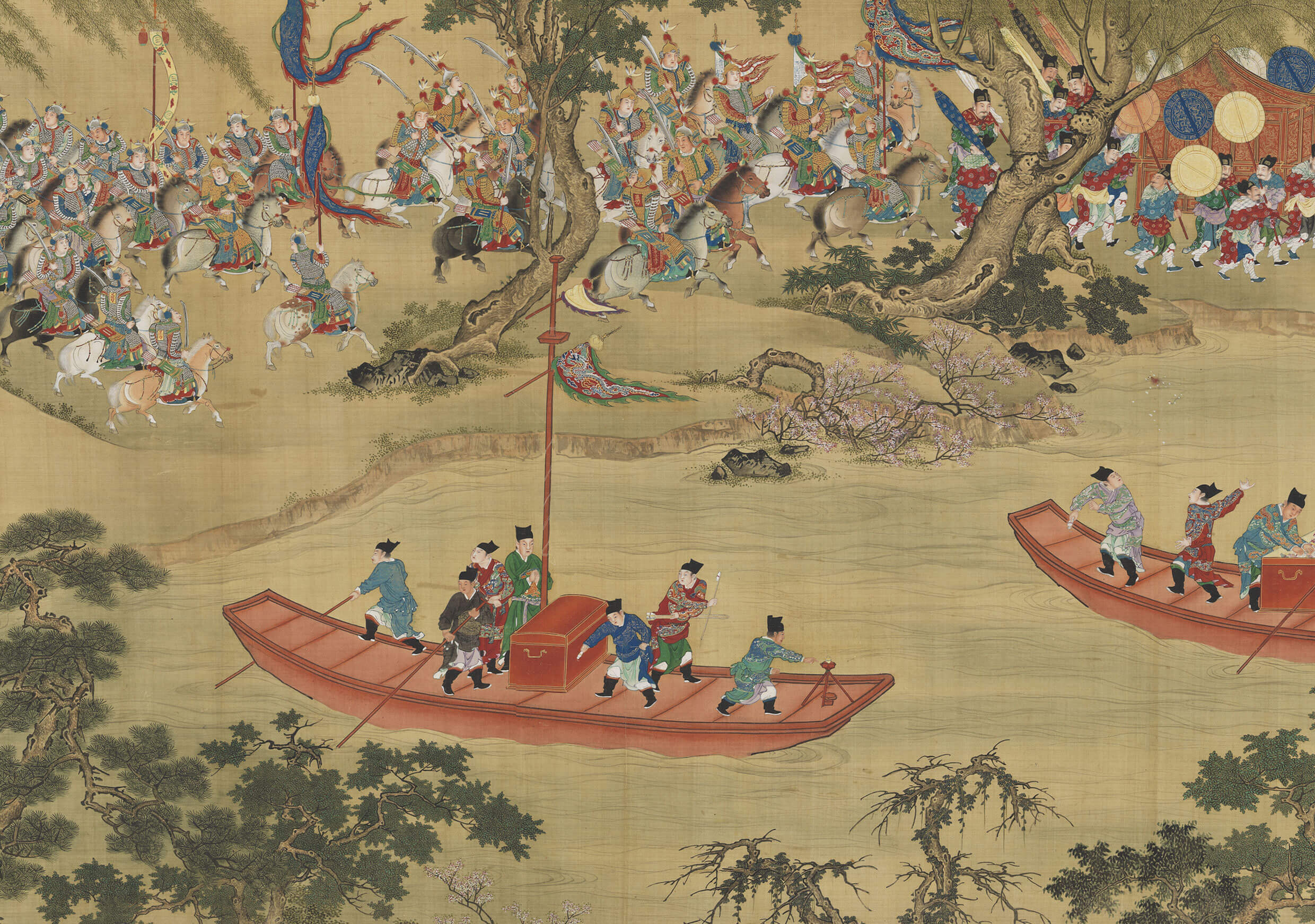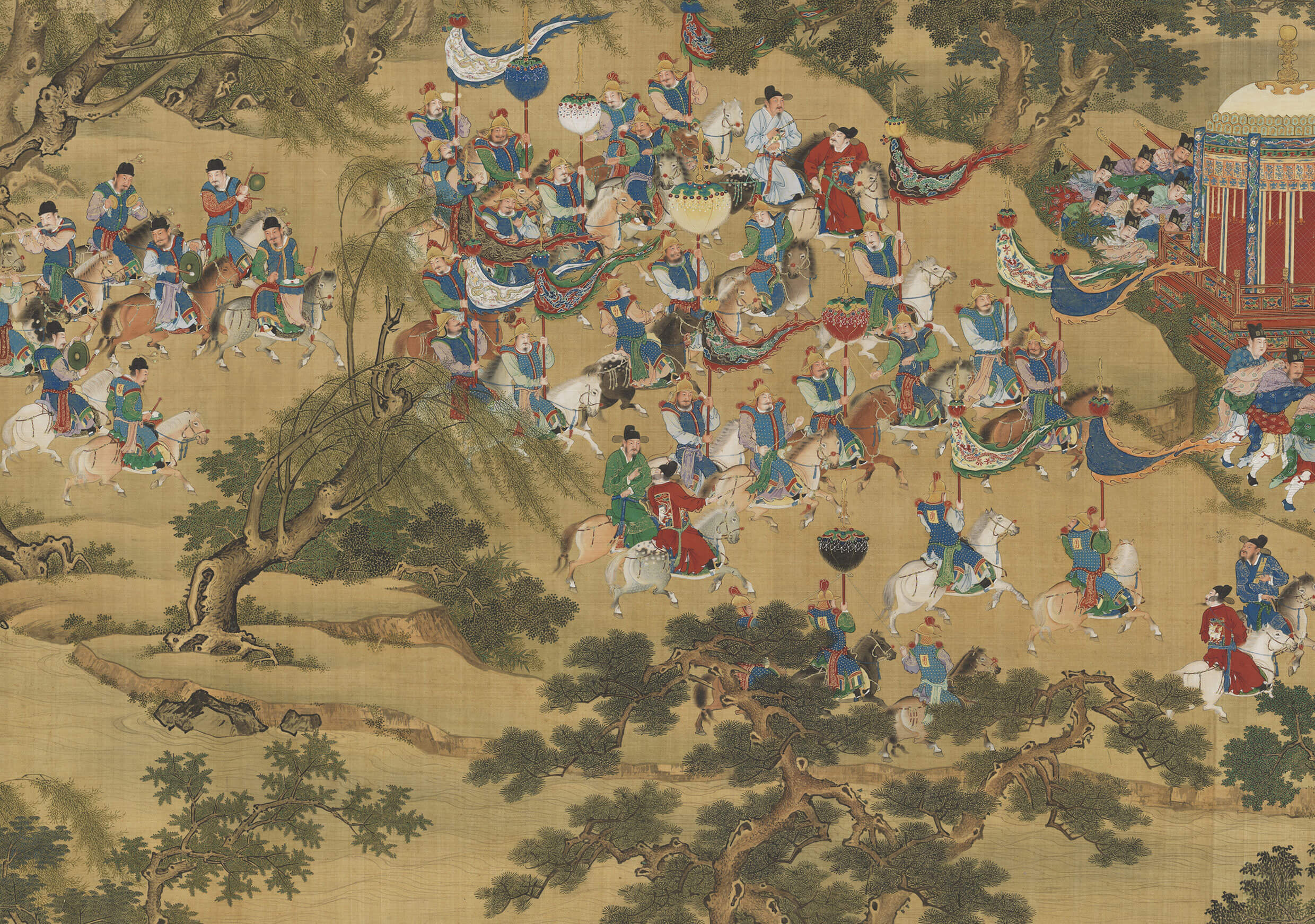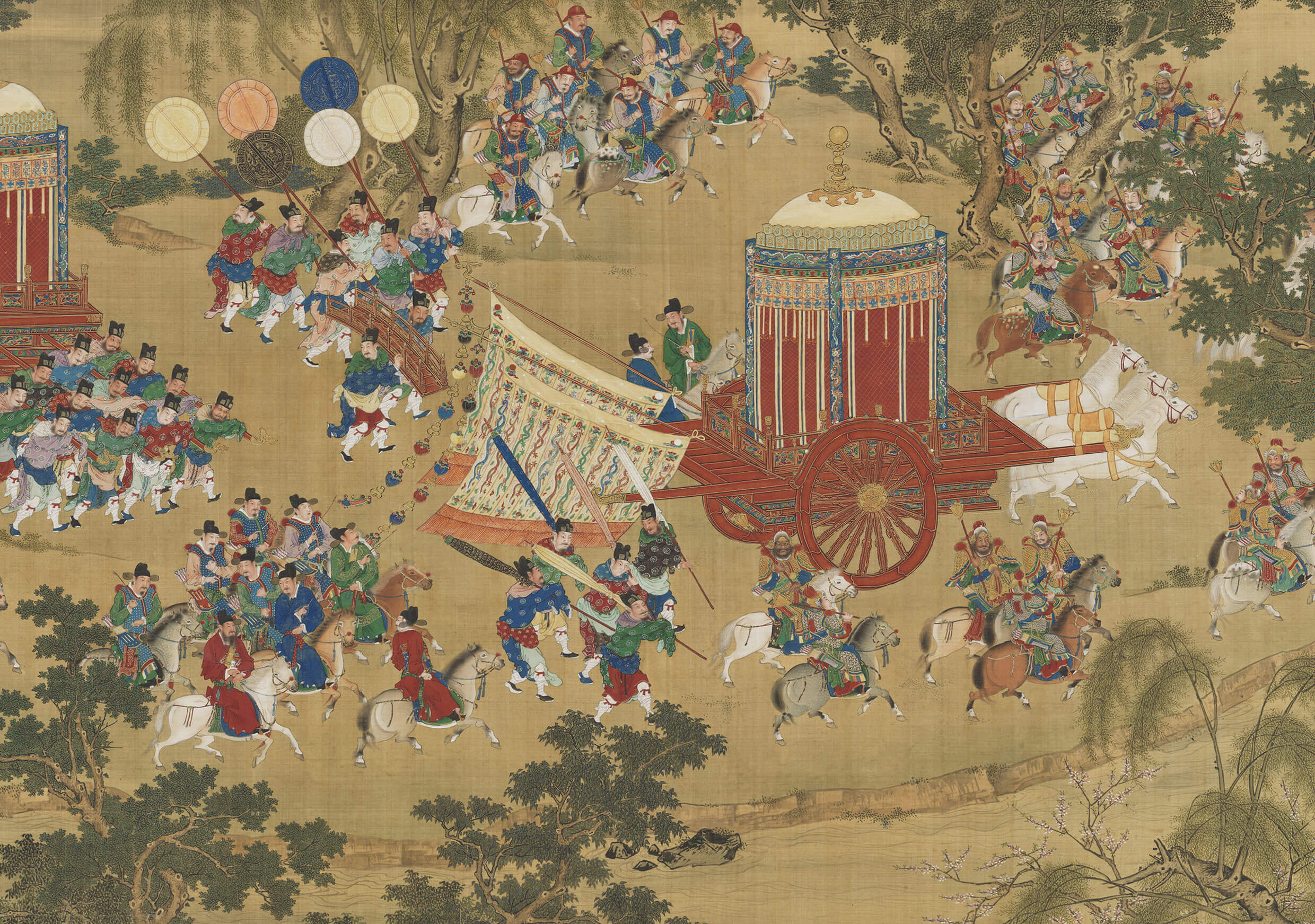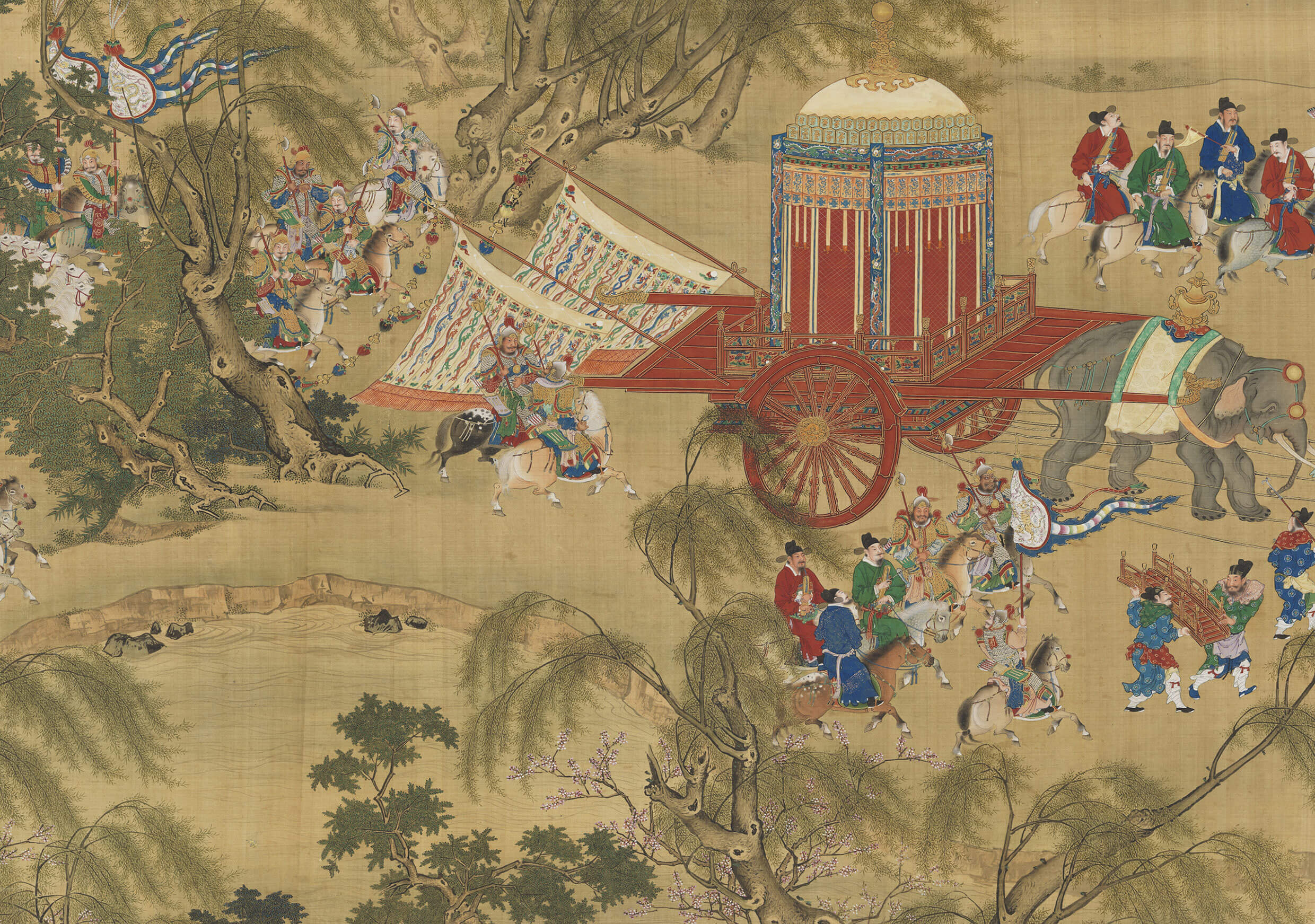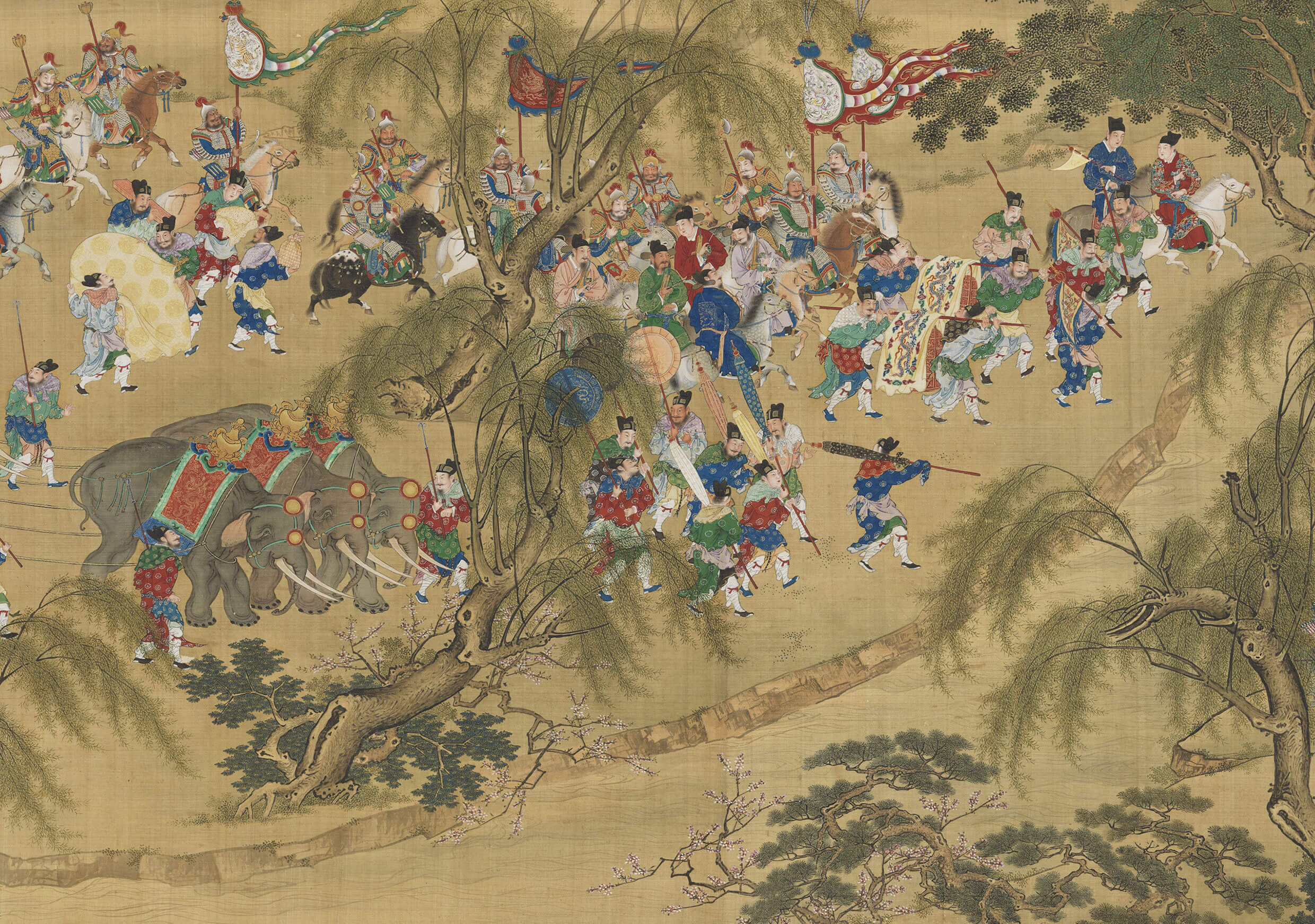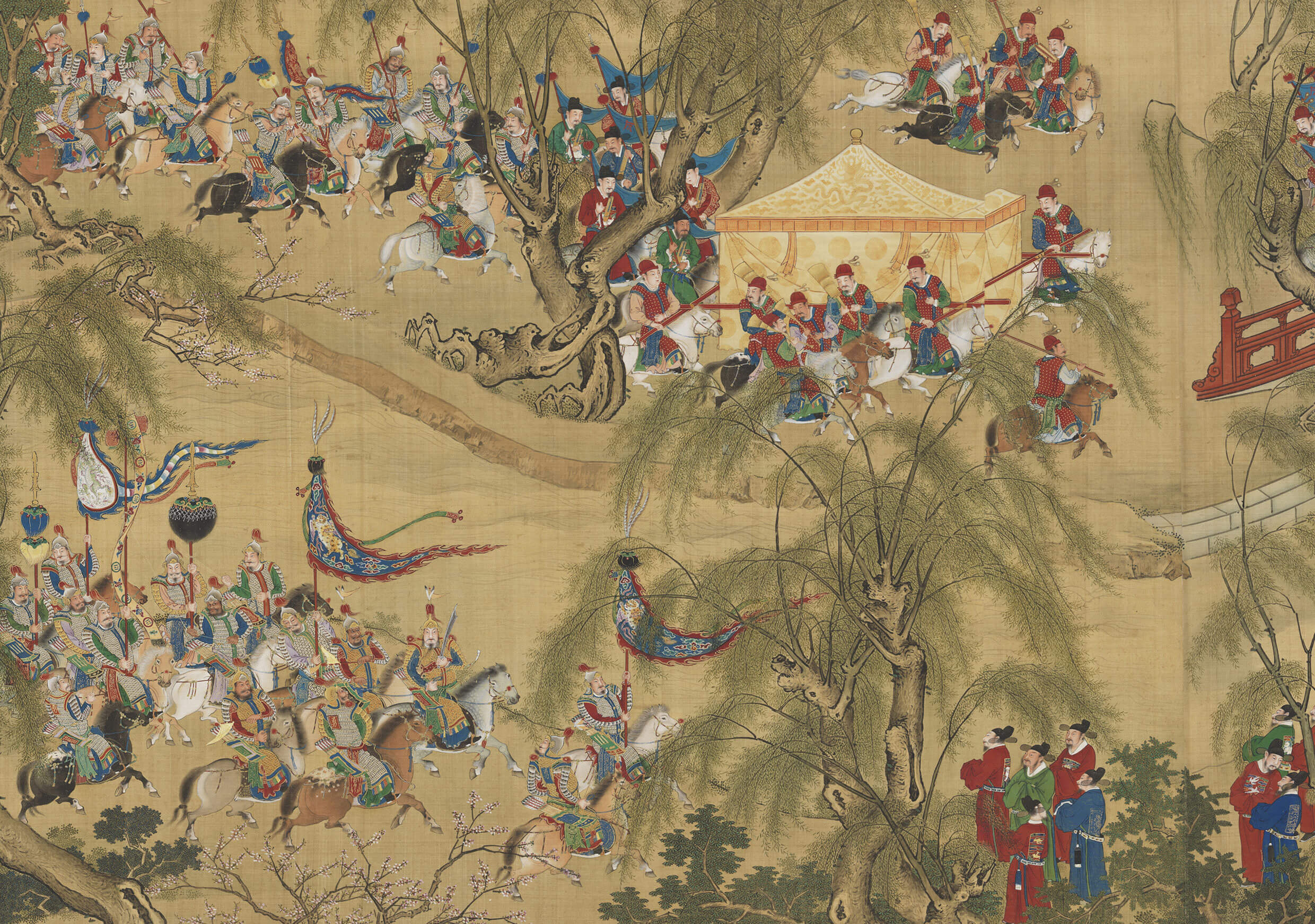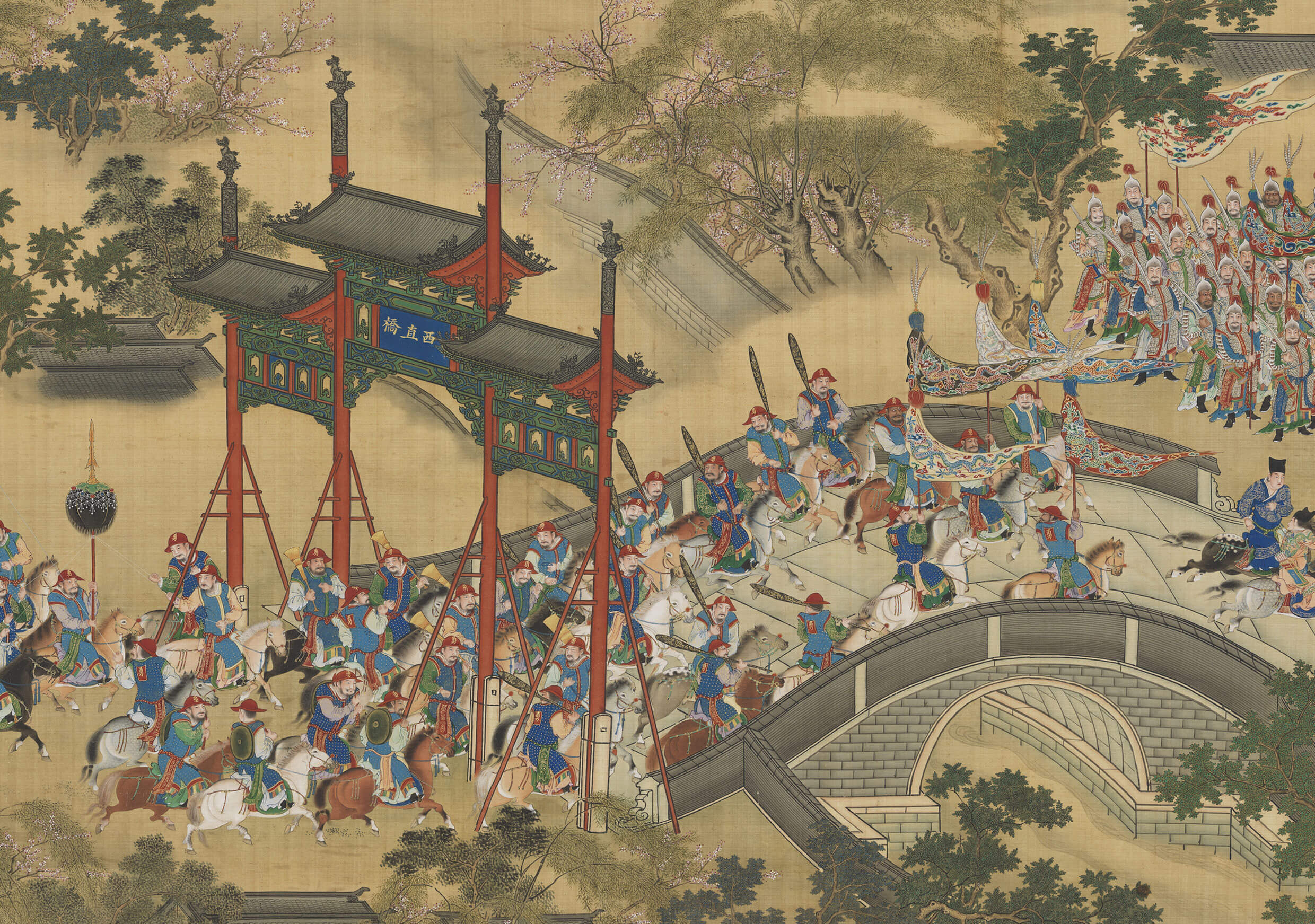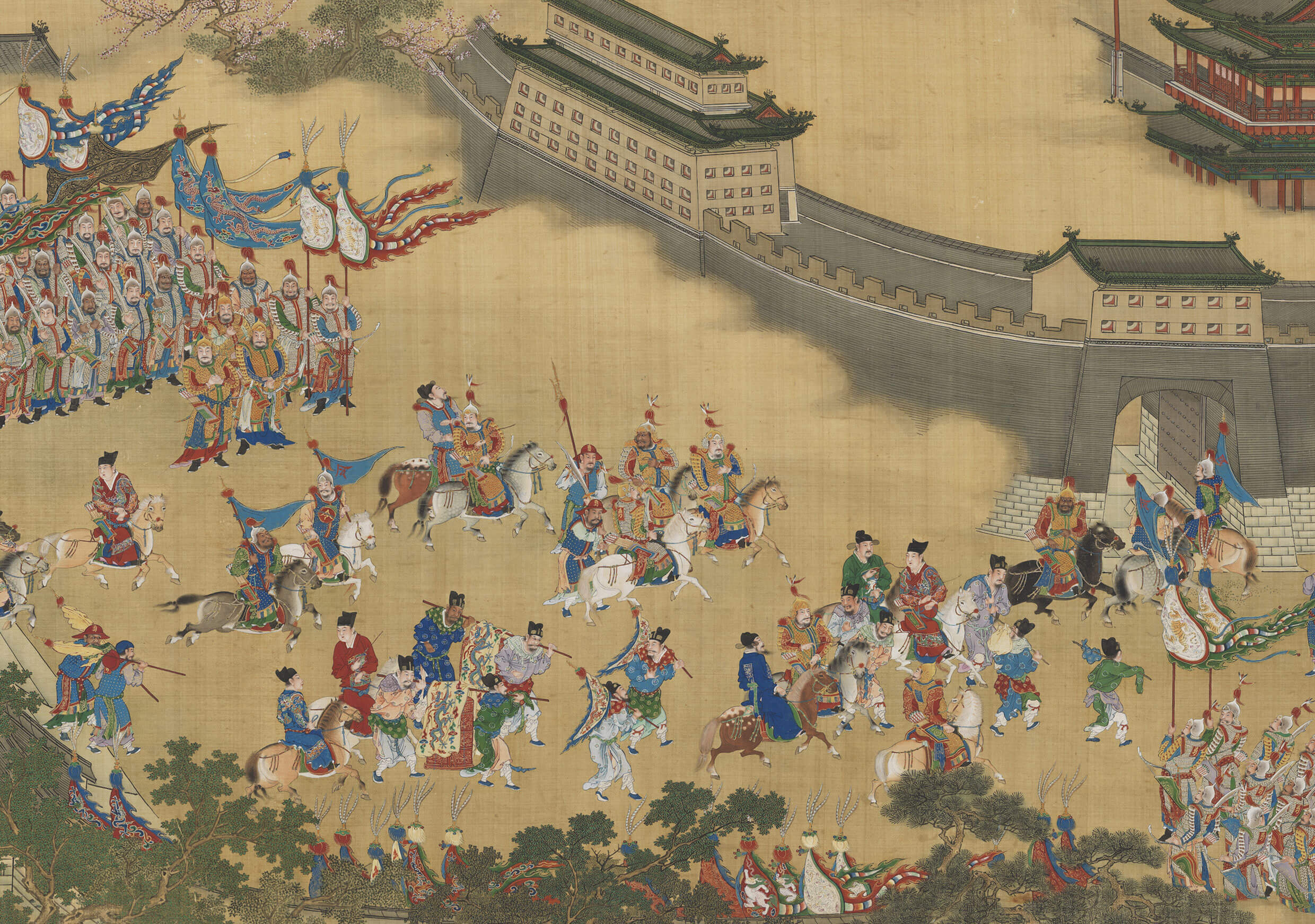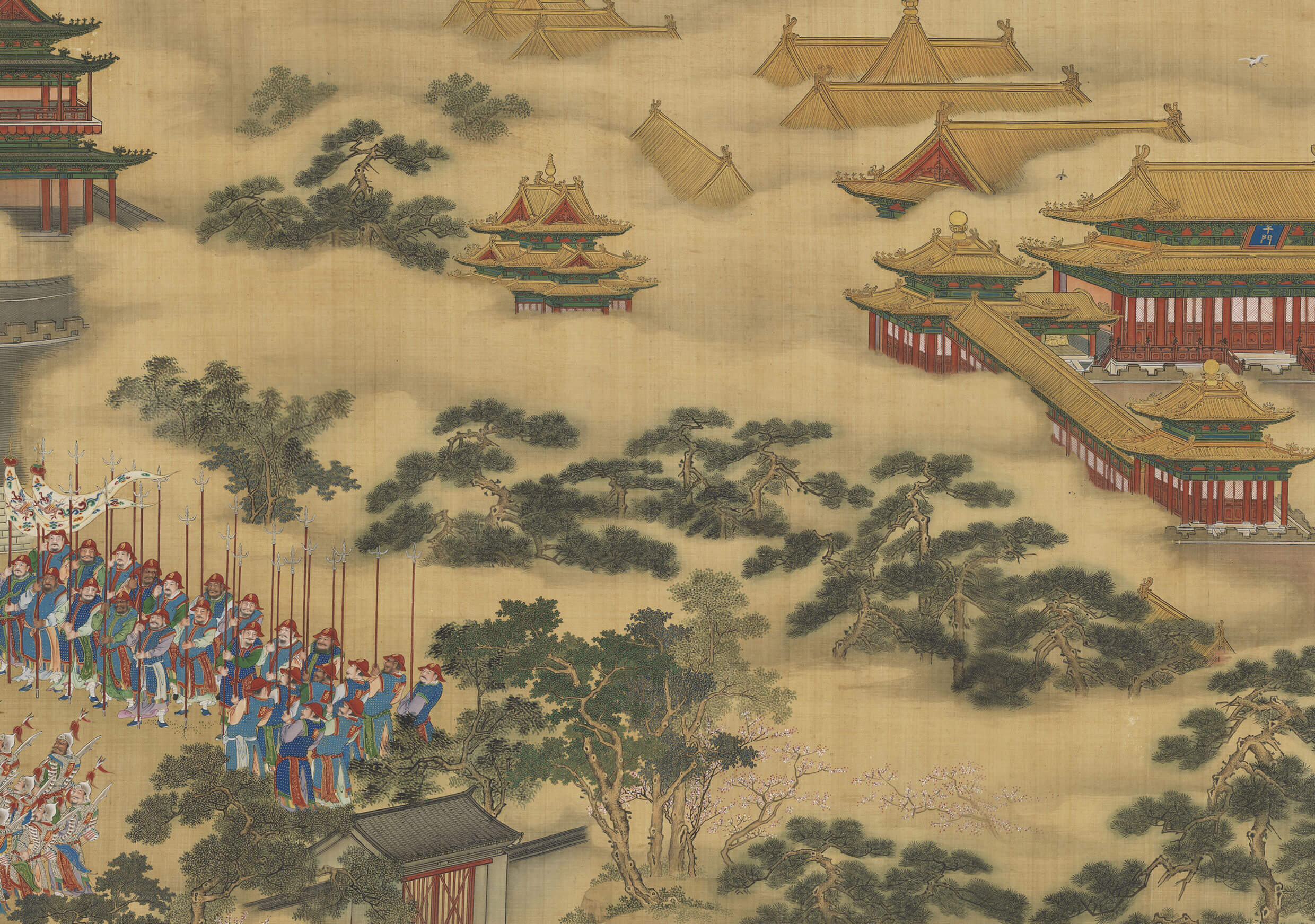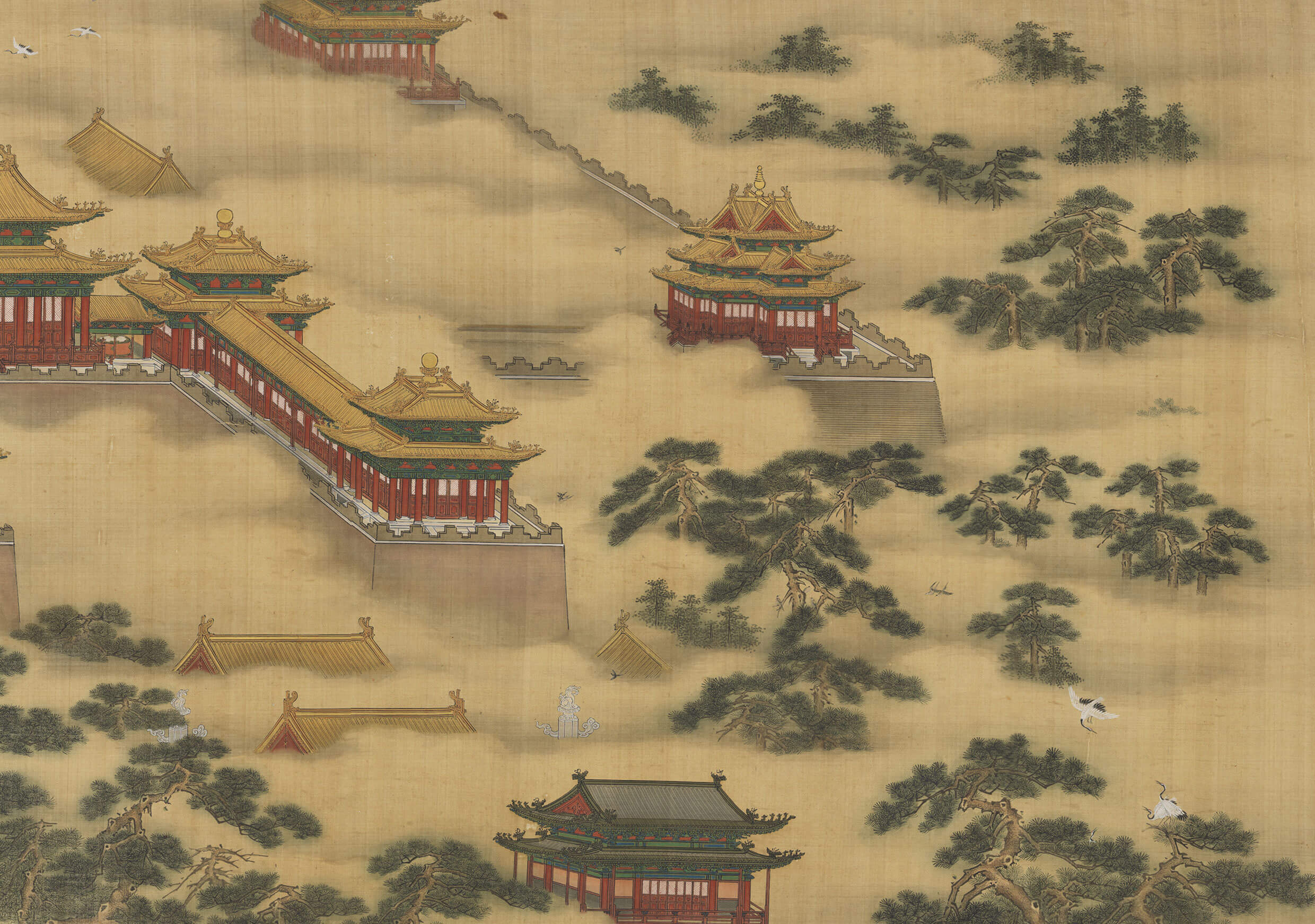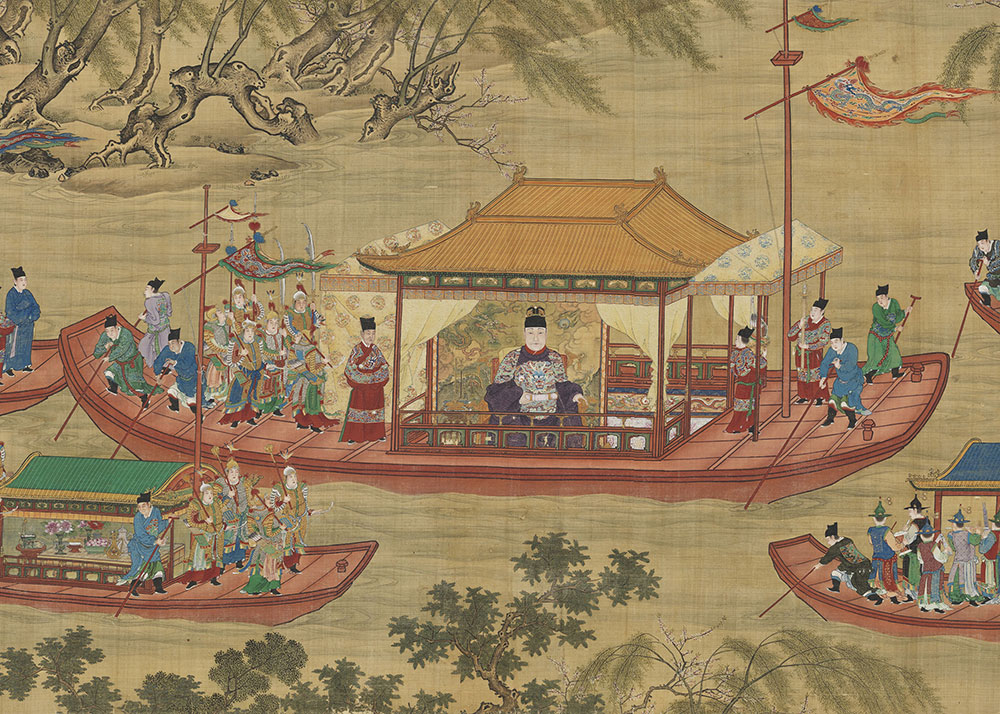Following and Improving--Imperial Portraits of the Ming Dynasty
Following several generations of imperial portraiture in the Ming dynasty, the display, ornamentation, and symbolism increased and tended to become more opulent. In the end, such visual extravagances almost completely filled the painting space in which the imperial figure appears.
- Seated Portrait of Emperor Taizu of the Ming
This is a portrait of Emperor Taizu (1328-1398), personal name Zhu Yuanzhang and reign name Hongwu, the first ruler of the Ming dynasty. His disfigured face is shown here covered with moles and having protruding cheek and jaw bones that seems to conform to what is known in fortune-telling as the "unusual appearance" of a true Son of Heaven. In other words, the unique facial features reveal this man as destined to become a ruler of enormous power.
The National Palace Museum has a total of ten such "ugly portraits" of Emperor Taizu in its collection. They come in a variety of manners, including crowned, imperially robed, and seated. The quality of these unofficial portraits, however, is not particularly high. It is thought that this type of Zhu Yuanzhang portrait was once popular among the people and so reproduced in large numbers.
- Emperor Gao, Taizu, of the Ming; Gao's Empress Xiaoci
- Verified and declared by the Ministry of Culture in November 2017 as a Significant Antiquity
This is a portrait of the Ming dynasty emperor Taizu (posthumous title Gao) at an older age. Although his beard has turned white and the flesh around his eyes and cheeks become looser, the eyebrows and small tufts of beard on his cheeks are quite similar to his appearance in middle age from "Seated Portrait of Emperor Taizu of the Ming." The beard hairs in this painting are rendered with great refinement and combed very carefully and orderly, the perfectly curving shape in this faithful portrait carefully and respectfully done by a court painter at the time.
Compared to the "ugly" unofficial portrait on display here, this has a much more realistic and official appearance, though it paradoxically does not conform to the imagination of a supreme ruler having an "unusual" appearance.
- Seated Portrait of Emperor Xuanzong of the Ming
- Verified and declared by the Ministry of Culture in December 2008 as a National Treasure
The Ming dynasty emperor Xuanzong (1399-1435), personal name Zhu Zhanji and reign name Xuande, is shown here with a dark complexion and a luxuriant beard as he wears an "yishan" crown.The yellow robes with dragon-and-clouds pattern were painted in different shades of gold. The emperor grasps an inlaid belt as he sits on a dragon throne meticulously carved that rests on a beautifully brocaded rug decorated with dragon circles.
Compared to portraits of Song dynasty emperors, rulers in the Ming dynasty seem to have spared no effort to show off the opulence of their clothing and objects of use, the extravagance of which was conspicuously displayed. With one hand on his belt and the other resting on his thigh, the open posture of Xuanzong's legs likewise has a special kind of powerful and confident presence, which markedly differs from the more civil and even humble appearance of Song dynasty emperors in their portraits.
- Emperor Zhang, Xuanzong, of the Ming; Zhang's Empress Xiaogong
- Verified and declared by the Ministry of Culture in November 2017 as a Significant Antiquity
Emperor Xuanzong and his second empress, Sun Ruowei (?-1462), are shown together in a single folio from an album.
The areas of shadow on the face of Emperor Xuanzong were completed using delicately hooked lines, which differs from the technique of varied colors in "Seated Portrait of Emperor Xuanzong of the Ming." This therefore appears to be a small and delicate portrait done after the seated portrait and not the other way around as a model for the larger one. The quality overall is exceptional and the beard represented as orderly, almost like a decorative pattern. This type of style would continue down to Emperor Xianzong (1447-1487, reign name Chenghua), representing a feature common to half-length imperial portraits of the Ming dynasty.
- Seated Portrait of Emperor Renzong of the Ming
Emperor Renzong (1378-1425), personal name Zhu Gaochi and reign name Hongxi, was the father of Emperor Xuanzong and on the throne for only about a year before passing away. The lines and colors of this work are done more coarsely, suggesting it is a slightly later copy. In the painting, Emperor Renzong is shown on what is probably a gilt folding chair, over which is placed a brocade. Both the golden footrest and rug with dragon-and-flower decoration increase the opulent effect of the painting considerably.
The title slip indicates that the painting was remounted in 1748 in the Qianlong reign during the Qing dynasty. However, the mounting silk is not decorated with golden floral patterns but instead features pink and white five-clawed dragons, which was an exception for the mountings of imperial portraits at the Nanxun Hall.
- Seated Portrait of Emperor Yingzong of the Ming
Emperor Yingzong (1427-1464), personal name Zhu Qizhen and reign name Zhengtong, was the son of Emperor Xuanzong. He was captured as emperor when personally leading a military campaign but ransomed and able later to resume his reign, marking one of the more unusual episodes in Chinese history.
Yingzong was the first ruler to inaugurate the "full frontal" format of imperial portraiture for the imperial Ming family. Furthermore, imperial portraiture under his rule became much more formal with the even more symbolic ceremonial dress of the emperor creating a truly majestic effect. In fact, as seen here, it makes him appear sitting in all his imperial regalia as if attending to state affairs at court.
- Make Way for the Emperor: "Return Clearing"
"Return Clearing" depicts an emperor returning to the palace over land and water after having left the capital to pay a trip to the imperial mausoleums. This huge handscroll is more than thirty meters long and features processions of opulently decorated guards and retinue numbering more than 900. With pomp and presence difficult to imagine, it shows the imperial procession in all its regal splendor. For this exhibition, the handscroll will be unrolled from left to right one section at a time (for a total of three display periods).

